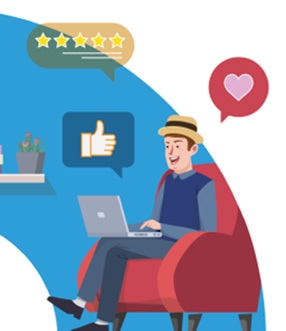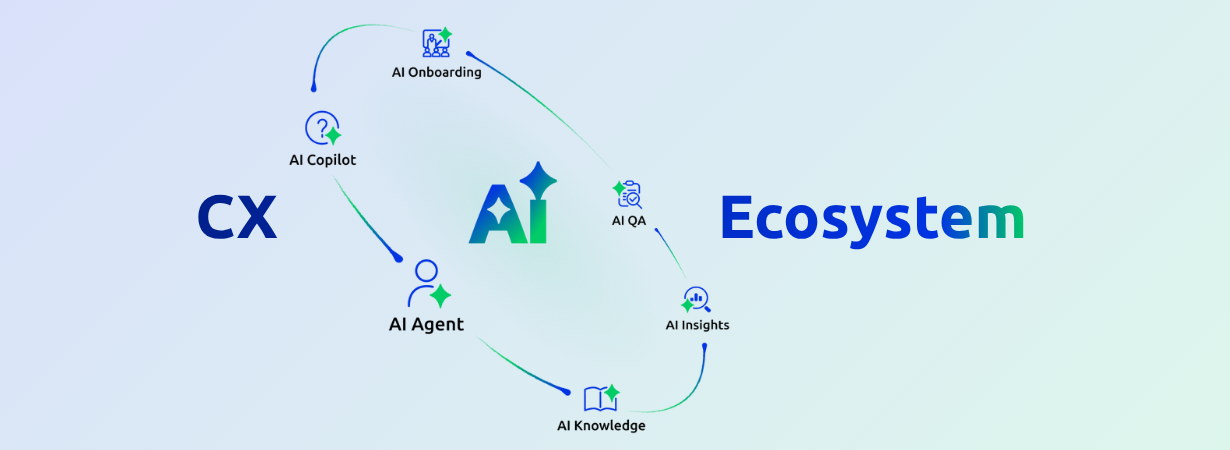By 2020, customer experience (CX) will overtake price as a key product differentiator. While there are many ways to improve CX – ease of use, innovation, and speed are just a few – personalization has recently been found to be the #1 priority for organizations looking to improve their customer experience.
Why is that? Well, regardless of how a customer chooses to contact you, expectations of consistent, relevant and personalized interactions across every channel — phone, email, social, website, or live chat — never change. Personalized interactions, easy accessibility, and invisible transitions from one digital platform to another are often what makes the difference between mediocre and magnificent customer experiences.
But a key challenge businesses now face is how to handle communications across multiple channels, formats, and device types, while ensuring messages are consistent with how their brand communicates and engages with customers. Throw in the complexities caused by differences in communication and learning across human teams, add the hurdles that legacy systems and processes force your teams to jump, and you’ve got a recipe for inconsistency in even basic customer communications – let alone effective, personalized ones.
But disruptive technologies like artificial intelligence (AI) chatbots hold the promise to simplify work, helping teams get out of the weeds and focus on what truly matters. And used correctly, AI chatbots can help businesses to deliver the same highly targeted and personalized experiences that top-performing human reps can. However, the success of these technology investments lies in using a combination of analytics and customer feedback to ensure that chatbots are delivering real value through meaningful personalization.
Delivering personalized customer experiences
There are several strategies businesses should adopt to realize the benefits of a personalized customer experience:
- Understand the customer journey: When creating amazing customer experiences, knowledge is power. Create journey maps based on real customer stories and data across all channels and systems, and diversify those maps for different customer types to identify opportunities for personalization. Then determine which message to deliver at which stage of the journey. Through this exercise, you’ll be able to engage customers throughout their entire journey by predicting their needs and wants based on solid data and insights.
- Go vertical-specific: If your business works with customers in different verticals, segmenting by industry and company type, or by other relevant customer attributes, can be a great way to identify relevant opportunities for personalization. For example, knowing that LinkedIn is huge for B2B companies, while Facebook and Instagram dominate B2C social, helps guide your approach to communication strategies which meet your customer where they are. In the same way, highly regulated industries like government and public services will have different needs than the tech industry. Ensure that your customer experience strategy can accommodate the unique needs of your customer base.
- Create data driven customer personas: All too often, companies rely on hypothetical customer personas which don’t deliver the insights they need. Instead, use real customer data and stories to create personas which truly reflect your audience and yield helpful information. Work in current demographics and separate your messaging to suit net-new, returning, or VIP customers to allow you to focus on exactly what your customers care about.
Obtaining a range of insights from customers, agents, and other stakeholders will help businesses accurately predict customer needs to deliver personalized and consistent experiences across every channel. Data and analytics will also drive innovation by providing extra data points to help predict trends and reinforce CX decision-making.
Reaching the next level of CX innovation with AI-powered chat
Complex queries? Multiple accounts and languages? No problem.
Imagine being able to simply predict the journey for every single one of your customers. Knowing each customer’s wants and needs helps you to tailor personalized customer experiences for them on every single channel. Now imagine the hours it would take to collect, analyze and synthesize all of that information into tangible actions – an impractical and time-consuming exercise for human-led teams.
Enter AI-powered chat.
Your AI bot can answer your most commonly asked questions to save your agents time and give your customers fast answers. Deliver always-on proactive services? Check. Understand user intent to deliver personalized, contextualized responses? Double check. Seamlessly integrate with your tech stack and provide real-time insight into your website visitors? Check, ch check. Bots make it possible in ways that humans can’t achieve.
Advanced bots harness the latest AI technology like Natural Language Processing (NLP), machine learning, and Neural Networks. These technologies allow bots to predict a customer’s needs based on intent and historical data, while also “learning” just like a human would to continuously improve and adjust its behavior.
Bots with brains can help customers and agents alike, from offering 24/7 customer support to suggesting responses to customer queries to executing data processing work.
Personalize the customer experience with a multi-channel strategy
75% of customers now expect a consistent experience wherever they engage with companies, regardless of channel. And while customers don’t think ‘channel’, companies do, and their service often suffers as a result. While exploring innovative new technologies can take your CX strategy to the next level, to deliver tightly consistent customer experiences, you need to make sure it integrates well into your entire tech ecosystem.
For example, integrating your AI chatbot into your social media channels allows the bot to handle queries on social in exactly the same way it does through chat. Hook that back up to your CRM to sync the bot’s chat transcripts over, and you now have an automated, comprehensive view of your customers.
Having a multi-channel strategy is one thing, but building links and integrations between channels is what makes those strategies really shine. Integrating all your customer service channels will provide you and your agents with a 360-degree view into your customer base and deliver quality, personalized service whenever and wherever the customer wants.
Wrap-up
Customer experience is the new battleground for loyalty and long-term revenue growth. Driving this is a seismic shift in customer expectation: 70% of customers have high expectations for First call resolution (FCR), while 64% demand a low- to no-friction experience. Given that repeated contacts and high friction are usually due to a basic lack of understanding about customer needs, personalization is a strategy which pays dividends – leading to higher conversions, increased revenue and improved brand loyalty.
It’s through equipping your agents with the right tools and access to customer insights that they can deliver right-on-time experiences that fit your customers like a glove. By simply putting AI to work, you can harness the wealth of customer information you already have to take your customer experience personalization strategy to the next level.
Download now: Improve Your Customer Experience: An Action Plan for CX Success
This eBook contains best practice tips from the CX field, encompassing methodologies like Six Sigma to ensure your pathway to customer experience improvement is clear and straightforward.
Download Now
eBook







